PUBLISHED on August 7, 2025, 7:10 PM EDT – Key Points and Summary – Eighty years ago this week, the United States dropped two atomic bombs on Japan, forcing the end of World War II.
-On August 6, 1945, the B-29 Enola Gay dropped the “Little Boy” uranium bomb on Hiroshima, killing up to 166,000 people.
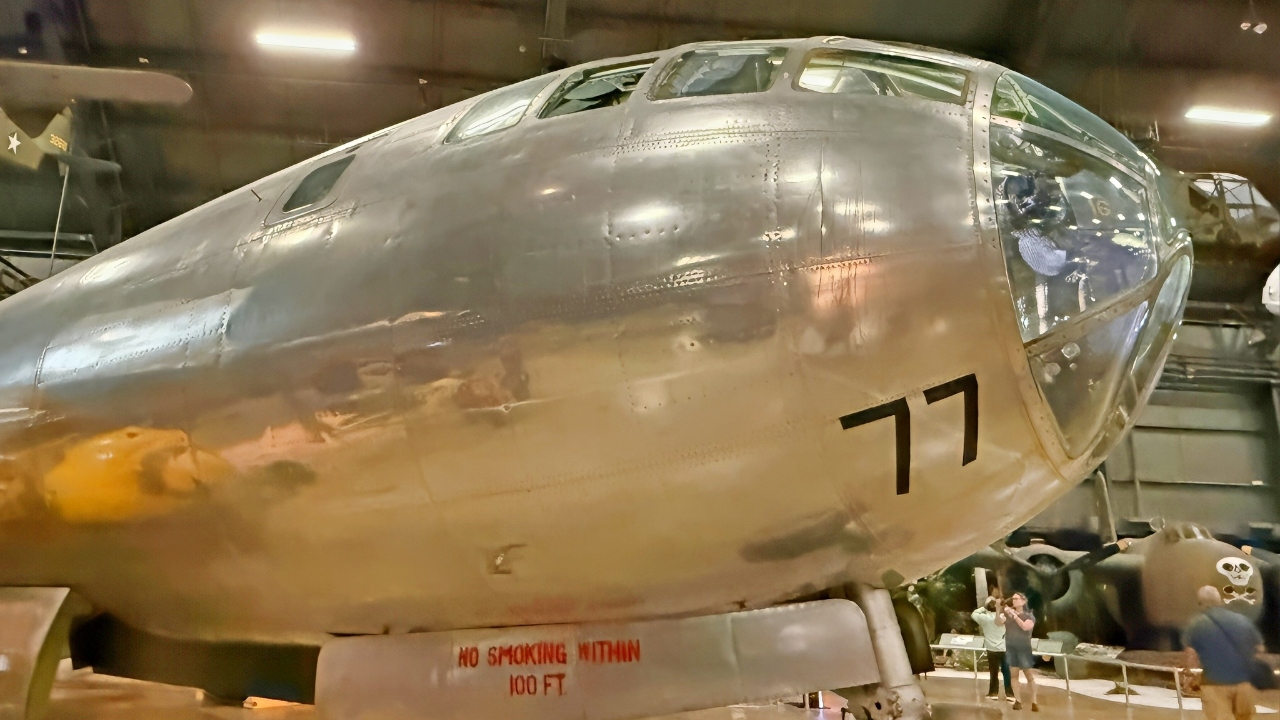
Bockscar B-29 Bomber Nagasaki. Image Taken by Harry J. Kazianis/National Security Journal.
-Three days later, on August 9, the B-29 Bockscar was diverted from its primary target of Kokura due to bad weather and instead dropped the more powerful “Fat Man” plutonium bomb on the secondary target of Nagasaki, killing up to 80,000 and compelling Japan’s surrender.
–National Security Journal visited the historic bomber on July 19, 2025, as part of a wider tour of the U.S. Air Force Museum in Dayton, Ohio. The pictures presented here are from that visit.
Bockscar B-29: The Bomber that Hit Nagasaki with the Fat Man Atomic Bomb
At the end of World War II, the United States dropped two atomic bombs on Japan. One at Hiroshima, and the other at Nagasaki.
At 08:09, Colonel Paul Tibbets, commander of the B-29 Enola Gay, started his bomb run and handed control over to his bombardier, Major Thomas Ferebee.
The release of the bomb at 08:15 (Hiroshima time) went as planned, and the Little Boy containing about 64 kg (141 lb) of uranium-235 took 44.4 seconds to fall from the aircraft flying at about 9,400 meters (31,000 ft) to a detonation height of about 580 meters (1,900 ft) above the city.
Enola Gay was 18.5 km (11.5 mi) away before it felt the shock waves from the blast. The bomb itself was highly inefficient, with only 1.7 percent of its material undergoing fission.
Nevertheless, the bomb obliterated the city in about a mile-wide swath. Between 60,000 and 166,000 people were killed immediately or died before the year was out from burns or radiation poisoning.
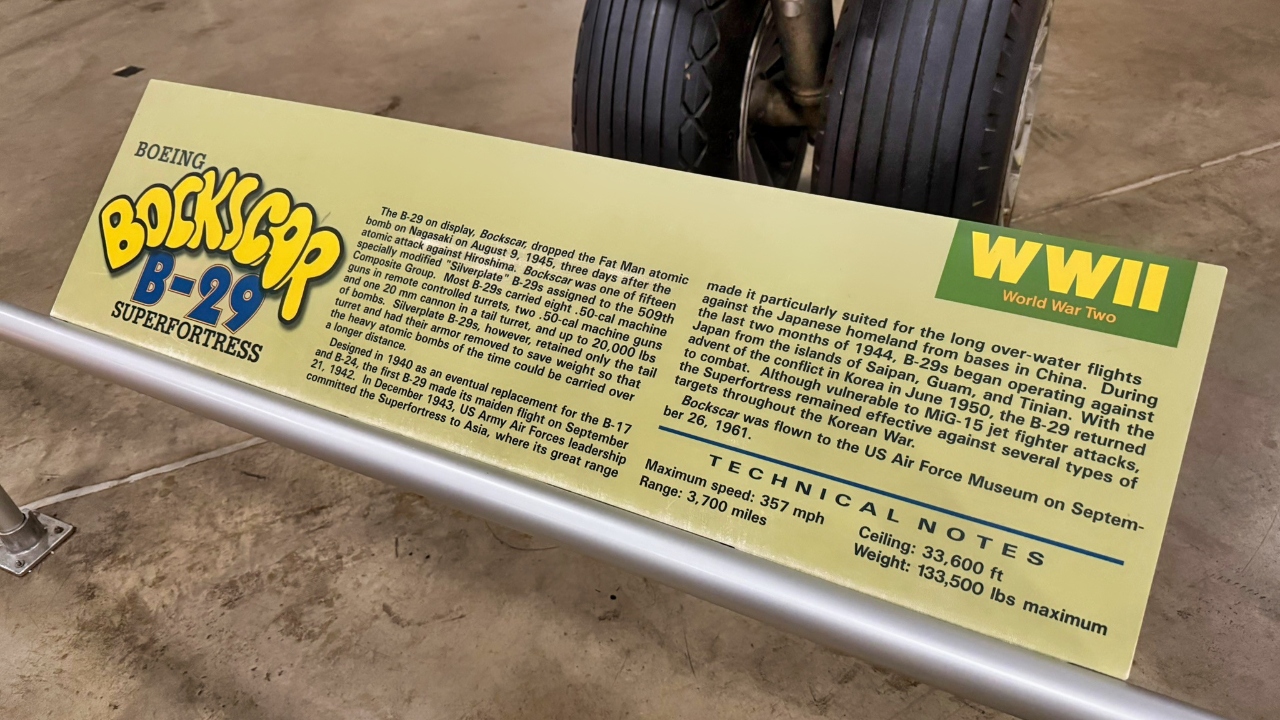
Backscar B-29 USAF National Security Journal Image Taken on July 19, 2025.
The Planning Of Nagasaki Bombing By The B-29 Bockscar
The B-29 Superfortress named Bockscar dropped the “Fat Man” atomic bomb on Nagasaki, Japan, on August 9, 1945, three days after the bombing of Hiroshima.
The mission, flown by Major Charles Sweeney, was intended for the industrial city of Kokura. Still, cloud cover and smoke from a previous raid forced a diversion to the secondary target, Nagasaki. Bockscar was a specially modified B-29 under the Silverplate program designed to carry atomic weapons in the 509th Composite Bomb Group.
B-29s carried eight .50-cal. machine guns in remote-controlled turrets, two .50-cal. machine guns and one 20mm cannon in a tail turret, and up to 20,000 pounds of bombs.
Silverplate B-29s, however, retained only the tail turret and had their armor removed to save weight so that the heavy atomic bombs of the time could be carried over a longer distance.
The B-29 Bomber Bockscar
Bockscar, a modified B-29 Superfortress, was chosen for the Nagasaki mission. After arriving at Tinian on June 16, the aircraft flew 13 training missions and three combat missions, during which it dropped non-atomic pumpkin replicas of the Fat Man.
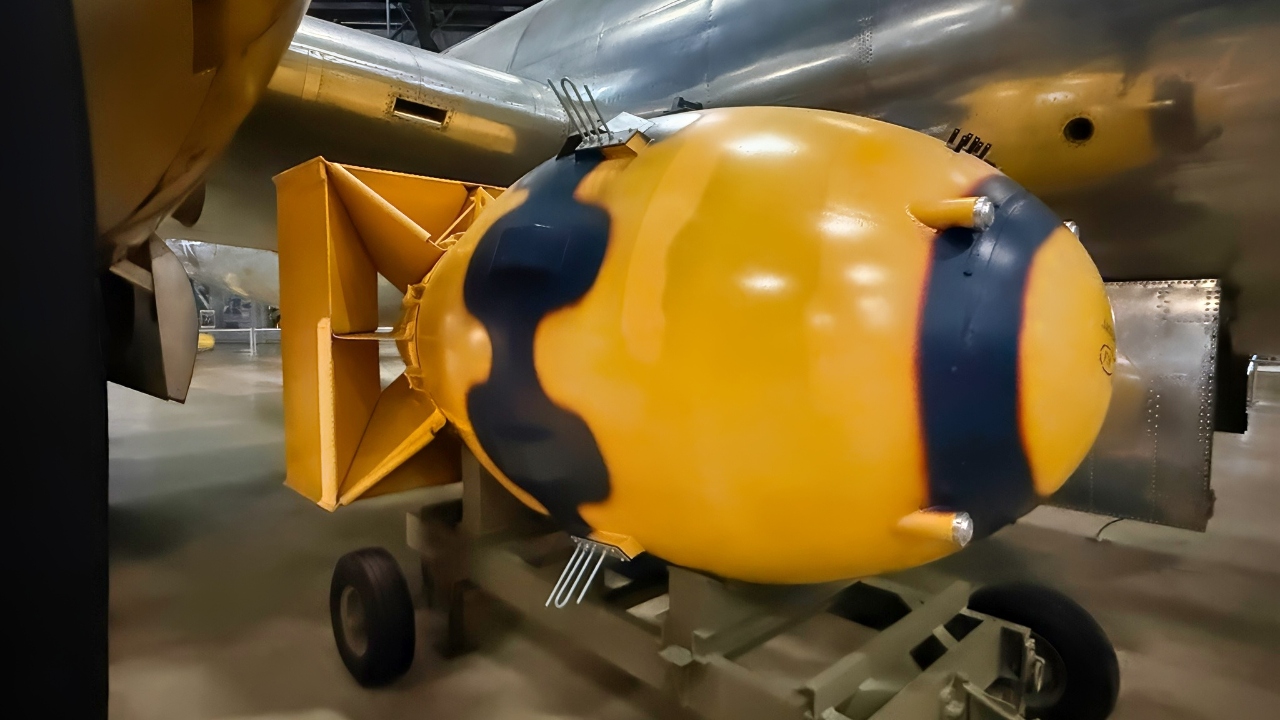
Fat Boy Near B-29 At USAF Museum. National Security Journal Photo.
The mission to drop the second atomic bomb on Japan involved three B-29s: Great Artiste, The Big Stink, and Bockscar. The primary target for the mission was the city of Kokura, home to the Kokura Arms Factory. The secondary target was two Mitsubishi armament plants in Nagasaki.
The designated aircraft to carry Fat Man was the Great Artiste, but it had been fitted with instruments to observe the bombing of Hiroshima. When the second atomic bombing mission was suddenly moved from August 11 to August 9, the time involved in getting the plane ready and adverse weather conditions meant that the crew of Great Artiste would fly Bockscar instead.
The bomb, named “Fat Man,” was a plutonium implosion-type device.
The mission commander was Major Charles Sweeney, who piloted Bockscar. The aircraft departed Tinian at 03:49. It arrived at the target area in Nagasaki, and Bockscar released Fat Man at 10:58 local time, observing it explode 43 seconds later.
The bomb missed its target by 1.5 miles but still destroyed a large area, killing an estimated 39,000 people. The Fat Man bomb was much more potent than the Hiroshima bomb; however, the destruction caused by this bomb was less than at Hiroshima due to the nature of the terrain.
The bomb detonated over a tennis court in Nagasaki. In an odd twist of fate, the bomb exploded almost directly over the factory that had made the torpedoes used in the Japanese attack on Pearl Harbor.
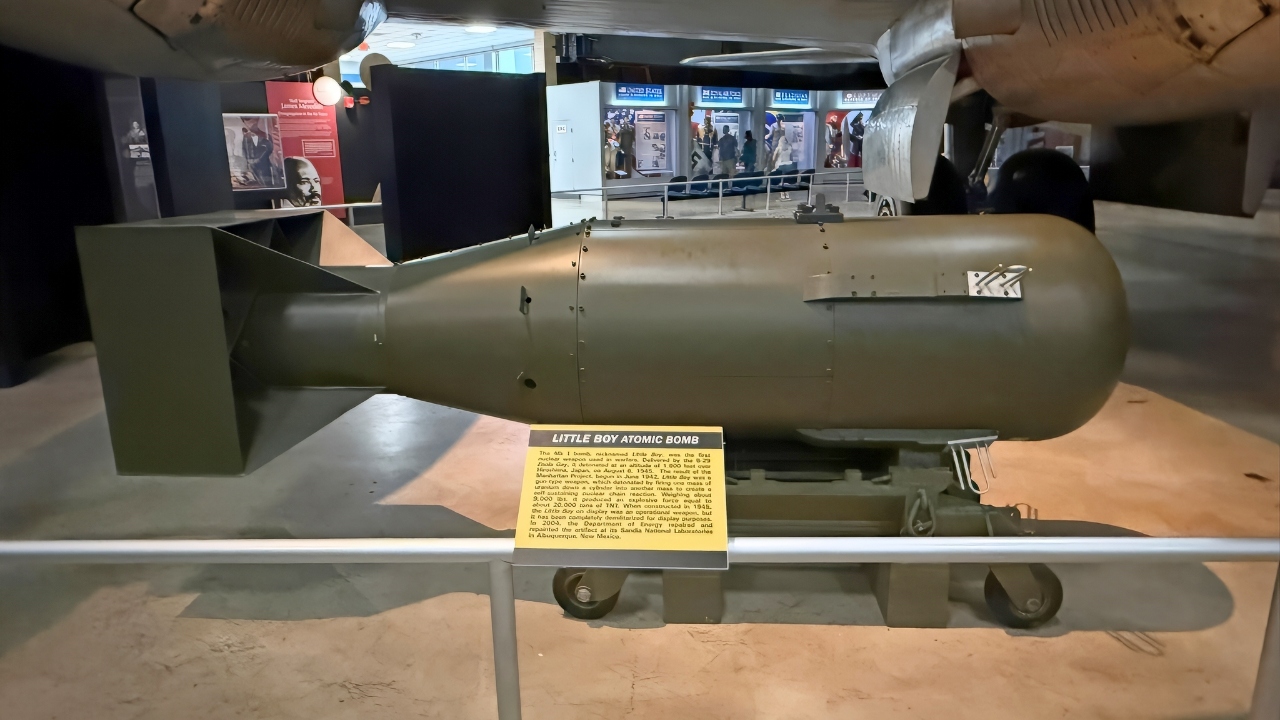
Little Boy Atomic Bomb. Image Credit: Harry J. Kazianis/National Security Journal.
The blast was confined to the Urakami Valley, and the intervening hills protected a significant portion of the city. Japanese authorities reported that over 70,000 to 80,000 people were killed by the bomb’s blast, or by burns and radiation poisoning by the end of the year.
Bockscar was critically short on fuel and made an emergency landing in Okinawa, and was later flown to the United States.
The Nagasaki bombing, along with the bombing of Hiroshima, finally forced the Japanese to surrender and end World War II.
About the Author:
Steve Balestrieri is a National Security Columnist. He served as a US Army Special Forces NCO and Warrant Officer. In addition to writing on defense, he covers the NFL for PatsFans.com and is a member of the Pro Football Writers of America (PFWA). His work was regularly featured in many military publications.
More Military
America Almost Had to Invade Japan


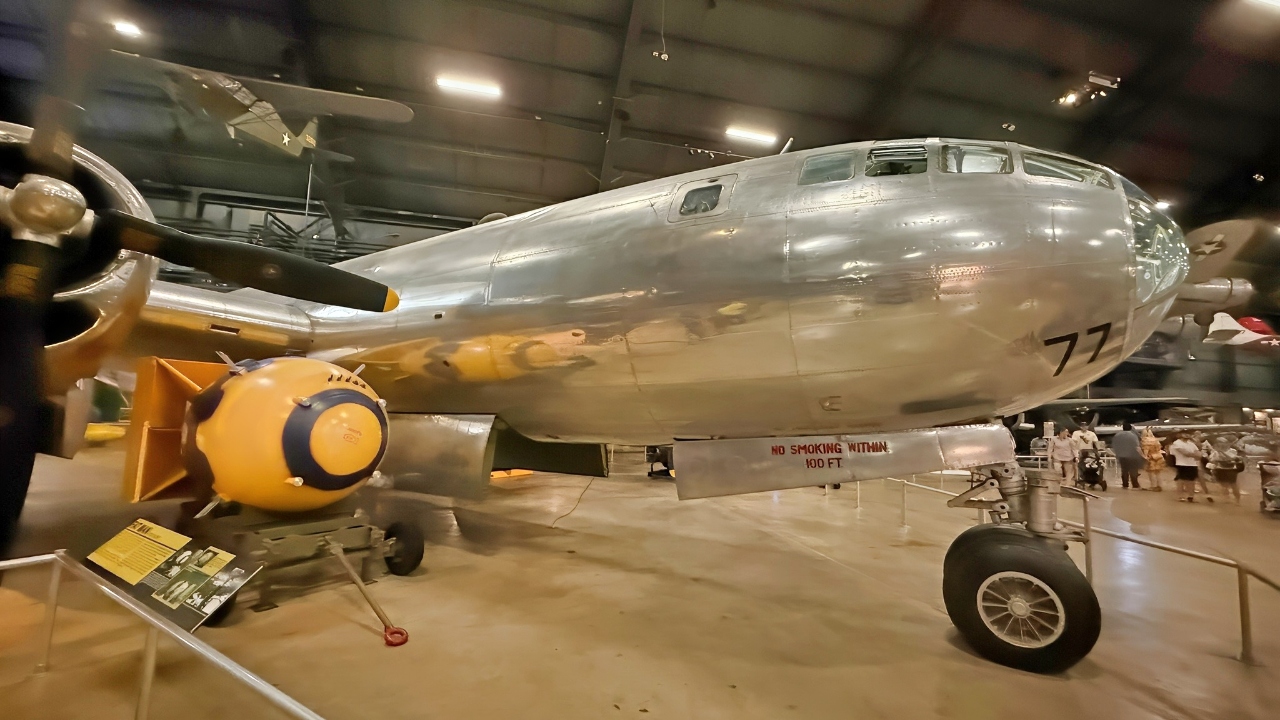








waco
August 8, 2025 at 8:07 am
Tomorrow, 9 aug 2025, is the 85th anniversary of the nagasaki A-bomb, a plutonium device that packed roughly 20kt of mega explosve whammo.
That’s eighty-five years ago.
Today, with taco man at the helm, whose mind now yo-yoes like a pendulum, the direction or swing depending on the latest news of the ‘cover-up’ of the secret client list, full-on nuclear kapow is very likely to happen again.
What did the sec of state say during a hearing.
The country is today anxiously awaiting a big large huge cataclysmic confrontation in…the western pacific.
Who dah planning that event.
The nuclear boffins at the Strategic Command. That Command which oversees the INDOPACOM center of great warfare.
What more to add, bockscar!
Swamplaw Yankee
August 8, 2025 at 2:40 pm
Historical Stuff slips into the op-ed: yep.
Radiation poisoning? Statistics on Japanese is shown. Where exactly is the Big Hollywood block buster movie about Yankee radiation poisoning from these NEW bomb materials?
The ship crews, the Rail road crews, various forces crews all were fatally exposed to the “raw” radiation poisoning emitted by the special “Dark Congo” uranium ore.
Sounds like the Brave Ukrainians who tried to make repairs to the malfeasance of the “Soviet” safety personnel in the Chornobyl nuclear plant fiasco?
So, did 1,000 Yankee citizens die from the transport of the Radiation poisoning ore? What statistics do we have: 10,000, 50,000 dead American citizens?
The Congo ore was so potent a source of radiation poisoning the Federal Government did what as a solution? The brains moved the deadly ore to New York State’s Lake Ontario Ordinance Site, farm land “stolen” for peanuts from local farmers.
The Federal Government allowed the barrels to decay and the low grade bomb material reliably (still) leaks out huge volumes of contaminated water in “secret” pipes into the prime source of Toronto Canada’s drinking water.
The Feds play a long game scheme of compensation (whatever) with farm locals who have mostly died off as they petitioned uselessly since 1946. Check the boring web site texts. The only action seems to have been when the feds wanted to use the drain pipes of the municipality as a way to transfer the Poisoning waters into the living area of the local population. -30-
Bockscar
August 9, 2025 at 12:40 am
In six days’ time, trump will have a meeting with putin in alaska. (15 august 2025.)
Could that mean finally end of ukraine conflict. Hard to day.
But supposing it’s the end of bloody conflict in europe, will the USAF then turn to the pacific. For bockscar 2.0 and end of the world. Yes, it will. 99.97%.